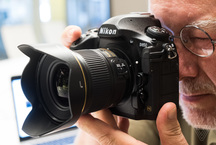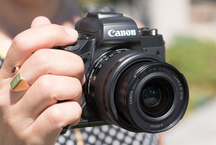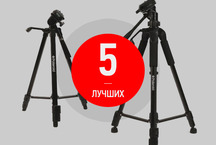Top 15 digital cameras





Although the war between compact digital cameras and cell phones, which have already managed to spawn their own direction in photo art (mobile photography), does not subside, in one, even a simple pocket digicam will surpass the mobile flagship: fit a lens with an optical zoom and a matrix of normal sizes in such a popular now just impossible. Namely, the ratio of price and quality of a photo largely depends on the matrix: with equal resolution, a higher sensitivity and lower noise level will be provided by a larger matrix, while the creators of a mobile phone camera will have to contend with noises and subtleties of a more accurate process. That is, a cheaper compact camera will be able to give a better picture, especially in low light.
In today's ranking of the best digital cameras we will consider only mirrorless cameras - “SLRs”, made in a separate rating, remain things quite specific and not cheap even at the amateur level.
Rating the best digital mirrorless cameras 2017-2018 year
| Category | A place | Name | Rating | Price |
|---|---|---|---|---|
| Best Cheap Digital Cameras | 1 | Canon IXUS 185 | 9.1 / 10 | 6 660 |
| 2 | Nikon Coolpix A100 | 9.0 / 10 | 6 069 | |
| 3 | Rekam iLook S970i | 8.7 / 10 | 3 490 | |
| The best digital cameras of the middle class | 1 | Fujifilm X70 | 9.8 / 10 | 3 490 |
| 2 | Olympus OM-D E-M10 Mark II Kit | 9.7 / 10 | 38 988 | |
| 3 | Canon PowerShot G9 X Mark II | 9.6 / 10 | 27 790 | |
| 4 | Fujifilm X-T10 Kit | 9.6 / 10 | 63 990 | |
| 5 | Nikon 1 J5 Kit | 9.6 / 10 | 26 490 | |
| 6 | Sony Cyber-shot DSC-RX100 | 9.5 / 10 | 26 990 | |
| 7 | Olympus Pen E-PL7 Kit | 9.5 / 10 | 29 990 | |
| 8 | Sony Alpha ILCE-5100 Kit | 9.4 / 10 | 34 990 | |
| 9 | Canon EOS M3 Kit | 9.3 / 10 | 39 490 | |
| The best digital mirrorless cameras of the top segment | 1 | Sony Alpha ILCE-7M2 Kit | 9.8 / 10 | 100 390 |
| 2 | Leica Q (Typ 116) | 9.7 / 10 | 329 900 | |
| 3 | Fujifilm X-Pro2 Kit | 9.6 / 10 | 139 990 |
Best Cheap Digital Cameras
|
6 660
Finding a good cheap camera now is not easy: after the crisis, prices have risen considerably. Therefore, reluctantly, IXUS 185 will have to be attributed to the number of budget ones - both in terms of characteristics and settings, this is a typical “digital shower”. The 2.3 / 2-inch matrix is paired here with a lens that has an eightfold zoom, and this set allows even more or less experiments with macro photography. But it’s better not to experiment with the resolution and photosensitivity settings: a small matrix makes a lot of noise in low light, but when using all 20 megapixels, noise is best seen, as in photosensitivity above the middle of the scale. Forcing a reduction in the size of the photo and a decrease in sensitivity noticeably improves the picture quality.
The camera can shoot video, but you should immediately get ready for slowing down the autofocus and fast battery consumption. But the quality of the video, by the standards of cheap "digital cameras", is quite acceptable. Main advantages:
Minuses:
|
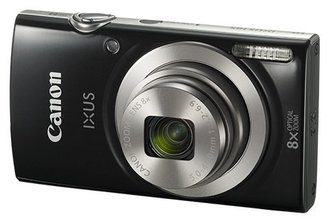 9.1 / 10
Rating
Reviews
The camera loads quickly and does not take a lot of weight - I carry it in my pocket for taking pictures “along the way,” in the afternoon the aperture of the lens and the quality of the matrix is enough for decent photos. |
|
6 069
One of the most popular digital cameras in its price segment - there are not a lot of models of frankly Chinese origin in it, so in the top we again see the eternal dispute "Canon vs Nikon". With very similar characteristics of matrices, Nikon has a smaller zoom range (only 5x), moreover, it is clearly more thoughtful - this can be seen from the time of switching on to the possibility of the first shot, and the burst speed as much as 1.1 frames per second is clearly added. the principle of "that was."
The advantages include compactness and light weight: Coolpix A100 will not delay the pocket, and in bright light will give a pretty decent picture.The only pity is that the battery life is small: in video mode, for example, it will last only 30 minutes. Main advantages:
Minuses:
|
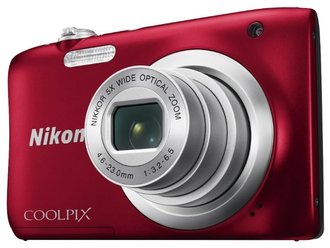 9.0 / 10
Rating
Reviews
I bought exclusively for use "pointed and removed", I do not want to deal with apertures and focal lengths. Cute, small, I quite like it. |
|
3 490
What would we do without the Chinese? Rekam remains the only company that can offer a digital camera for less than 4000 rubles, and at the same time it can even take pictures!
Naturally, all the signs of origin are obvious - a lax body (especially chromoplastic buttons cut the eye), and the very name of the series directly refers you-know-to which company. Well, at least the gnawed pear was not painted on the body, and that was fine. But in the end, buying a camera for the money, what to expect? On hand, we get as much as 21 megapixels, rammed into a 1 / 2.3-inch matrix. The possibilities of the photographer fairly limit the fixed value of the aperture and the narrow range of sensitivity of the matrix, although, on the other hand, the Chinese should be respected, at least for the fact that they did not, in their tradition, lift the maximum ISO into space. Here, the maximum is ISO 800, and the matrix still more or less pulls this sensitivity. But in terms of the simplicity of the iLook settings, undoubtedly, it is necessary to recognize the best among the inexpensive “soap dishes” - the menu items here are so few that even a child will deal with it. Main advantages:
Minuses:
|
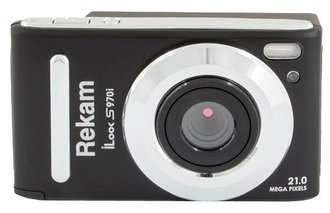 8.7 / 10
Rating
Reviews
Bought a child - more or less photographs, but not so sorry to break. Although he still lives, oddly enough ... |
The best digital cameras of the middle class
|
3 490
If you really need a compact camera, but you don’t want to sacrifice the quality of the matrix in any way, the Fujifilm X70 will be a very interesting option - of course, we haven’t survived to a fullframe in this format, but APS-C with a 1.5 factor already quite good. Moreover, for the sake of quality, the manufacturer did not inflate megapixels - there are only 16.3, but the picture quality is top notch (thanks to the X-Trans CMOS II matrix), and the noise becomes noticeable only when trying to unscrew the sensitivity to the maximum. A nice bonus is the ability to video in FullHD format @ 60fps.
Due to the compact size, several sacrifices have been made - there is no optical viewfinder, and the display, although turning it, is not always convenient in the daytime. The focus mode lever is too small, not everyone is comfortable using it. The management itself, most likely, will seem inconvenient and illogical to the lover of digital “compacts,” but after a film camera (to which he mimics), it is quite easy to master. Main advantages:
Minuses:
|
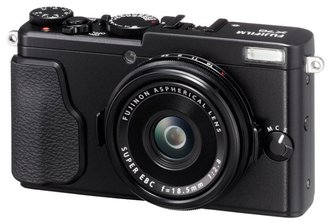 9.8 / 10
Rating
Reviews
The quality of the picture is definitely the best mirrorless camera, which fell into my hands. |
|
Diligently mimicking the old “DSLR”, this camera remains a very modern digital camera, besides with interchangeable optics (Micro 4/3 bayonet). The matrix here with the same resolution is less than that of the Fujifilm X70 (crop factor 2), but is quite comparable in image quality. In addition, the developers have supplemented the camera with optical and software image stabilizers: a blurry frame is much worse than underexposed or noisy, all the more so in RAW you can cope with this. The decision to place three function keys on the case should be assessed: the purpose of each can be configured through the menu according to your needs.It is much more convenient than the case overloaded with buttons "for all cases" or, on the contrary, the need to constantly dig into the menu. Function buttons, for example, you can put a quick adjustment of the sensitivity of the matrix, exposure compensation, switching the shooting mode. Moreover, the rest of the camera buttons and even the mode dial are also programmable! Of course, this may already seem to be overkill, but according to the possibilities of adjustment “for themselves”, the Olympus OM-D E-M10 Mark II is undoubtedly the leader in its segment. Main advantages:
Minuses:
|
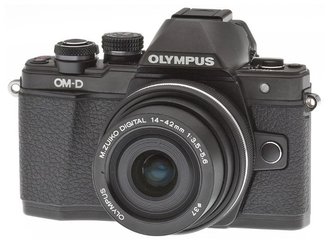 9.7 / 10
Rating
Reviews
I wanted a “SLR”, but I didn’t have enough money - and now I don’t regret it. No, seriously, this small mirrorless camera can very, very much. |
|
27 790
Even more compact than the X70, the digital camera is actually a pocket format. High-quality assembly and explicit references to retro-style - the two main features of the modern compact high-end, and all this G9 X is endowed to the fullest. As well as the ability to shoot in RAW - this gives a much higher image quality than an unnecessarily pinching internal JPEG converter.
There is no viewfinder, but the three-inch touch screen is extremely functional: you can quickly adjust the shooting parameters, and in the user presets mode you can set the desired ones from your own presets with one touch. For the sake of compactness, the screen does not rotate, but in inconvenient positions you can use it to sight your smartphone by connecting it to the camera via Wi-Fi. Another plus is the use of a conventional microUSB connector for charging: you can safely take the power bank for all gadgets on the road, and not a pack of batteries for the camera separately. Main advantages:
Minuses:
|
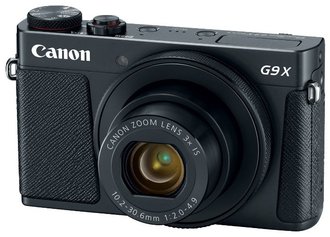 9.6 / 10
Rating
Reviews
I always take it on the road - it does not take much space, it turns on quickly and focuses. The quality of the photo ... yes, be sure to tell there! |
|
63 990
Successful development of the Japanese corporation: in terms of its qualities, the camera is close to professional. The X-Trans CMOS II matrix with a resolution of 16.3 megapixels has a primary color filter that allows you to abandon the low-pass filter and thereby increase the pixel-by-pixel resolution. The results of shooting at high ISO (3200 and sometimes even 6400) are very worthy. The combination of phase and contrasting focus allows you to quickly take pictures with perfect sharpness: autofocus does not slow down even in difficult conditions when you need to quickly determine the distance to the object. The camera has two shutters - electronic (with a shutter speed of up to 1/32000) and classic mechanical. Main advantages:
Minuses:
|
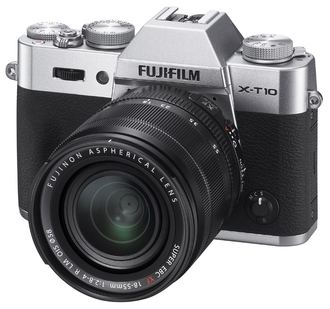 9.6 / 10
Rating
Reviews
I am pleased with the camera as an artistic tool, using it with ancient Japanese optics, in this alliance the matrix shows itself in all its glory. |
|
26 490
Relatively inexpensive and very popular digital camera. The BSI CMOS matrix is small, so 20.8 megapixels do not give any special advantages. But the hybrid 171-point focus allows the camera to quickly determine the distance to the object. The model is good for low light conditions (although in daylight at dusk it may cause a blink of exposure).J5 shows a low noise level throughout the entire range of photosensitivity: it is noticeable only at ISO 6400 and higher, and even at ISO 12800, pictures printed in a small format are quite decent. The camera is great for sequential shooting - its speed is 20 frames / s and the buffer for the same 20 frames. And with a fixed autofocus shooting speed up to 60 frames / sec. What is missing is the viewfinder and the ability to connect an external flash. Main advantages:
Minuses:
|
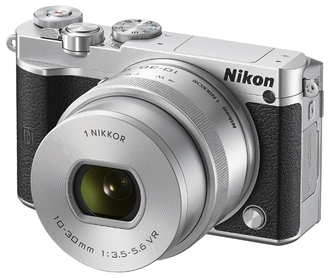 9.6 / 10
Rating
Reviews
To call it a soap box really does not turn the language. The quality of work and the resulting images can give odds and amateur SLR. |
|
26 990
High-Zeiss optics and small size - a good combination for those who constantly carry a camera in your pocket. However, without a film on the display, we do not recommend this: it will be easily scratched in this case.
Inch matrix here is noisy at high ISO values, so the lens with f1.8 should once again thank the creators: with darker optics you would have to switch to increased sensitivity more often, and then either clean the RAW, or belatedly remember that the photos went in jpeg. The controls are extremely simplified and recessed into the body: plus the convenience of the “pocket life”, minus the convenience in large hands. Electronic viewfinder, unlike older models, is not here, as well as an inclined screen, but it is more than pleasantly reflected in the price. Main advantages:
Minuses:
|
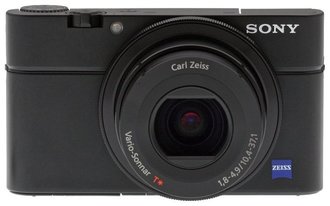 9.5 / 10
Rating
Reviews
The best digital camera! I bought into optics and, I must say, the rest of this camera did not disappoint. You can even shoot in JPEG, without really sacrificing quality. |
|
29 990
Retro housing and super modern “stuffing” - this is how you can characterize this device. Mirrorless from Olympus has a good Micro 4/3 sensor with a resolution of 16.1 MP. True Pic VII processor provides fast camera operation. The 81-point autofocus occasionally misses only in low light. The three-axis matrix stabilization system VCM E-M10 allows you to shoot with it in the most difficult conditions and at the same time get good photos. The main functions can be controlled from a smartphone via Wi-Fi. The swivel screen is useful for selfies, but the lack of a viewfinder is one of the few weak points. As the video: the maximum possible - 30 frames / s in Full HD resolution. Main advantages:
Minuses:
|
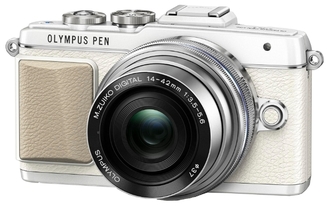 9.5 / 10
Rating
Reviews
If your hands grow from the right place and you understand a little what focus is, shutter speed and aperture - the model is able to give great shots! |
|
34 990
An excellent CMOS APS-C matrix with a resolution of 24.3 megapixels and a BIONZ X processor can raise the maximum ISO value to 25600, and even at such high values, maintain good detail and color reproduction. The camera has one of the fastest hybrid autofocus systems available today. It consists of 179 phase sensors, occupying 92% of the entire matrix and 25 contrasting, which greatly increases the chances of catching the right moment when shooting fast moving objects.At the same time, it is not clear why the developers limited the serial shooting to 6 frames / s, so the model is not suitable for reportage purposes. But the video here is at a good level. Main advantages:
Minuses:
|
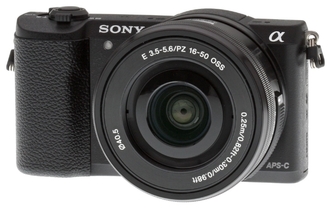 9.4 / 10
Rating
Reviews
The camera is good in all respects, even an imitation of the shutter release caresses the ear. Management is extremely convenient, I used to for 1 day. |
|
39 490
Canon was the last to enter the “mirrorless” market and is still catching up, but the EOS M3 is already a very competitive model. It has exactly the same 24-megapixel APS-C matrix as in the mirror Canon EOS 750D and 760D. Due to this, high-quality images can be obtained up to ISO 3200 (and with a high-quality EF-lens - and much higher). Automatic white balance is quite accurate, there are no blunders. Focusing is not super-fast, but sufficient for domestic purposes. You can control the camera (adjust the exposure, select the focus point and view the pictures) remotely via a smartphone using the EOS Remote application. Among the drawbacks, we note the absence of the viewfinder and a very low burst speed (4 frames / s). Main advantages:
Minuses:
|
 9.3 / 10
Rating
Reviews
For me, this is an ideal replacement for a heavy SLR on travels not related to prof. activities. The main reason for the purchase is the possibility of using L-optics. |
The best digital mirrorless cameras of the top segment
|
100 390
Do not want to carry with you a heavy mirror camera, but you do not want to lose in the quality of the image? Sony allows you to do this: the quality of a fullframe matrix is hardly inadequate. ILCE-7M2 will make many people think when choosing a new camera: given that even the previous version received high marks, and now the update has brought an effective optical stabilizer and accelerated autofocus, this is definitely one of the best cameras for such money.
However, you should immediately purchase either a battery grip or a set of spare batteries for the camera - it consumes the staff at the speed of an inexpensive “digital camera”, although the dimensions of the case seem to allow you to put the battery more powerfully. Main advantages:
Minuses:
|
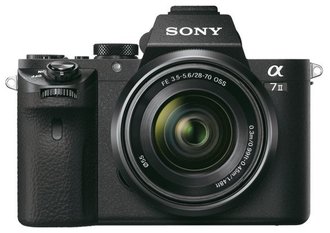 9.8 / 10
Rating
Reviews
For shooting weddings (main orders), I haven’t taken a “mirror” for a long time - ILCE-7M2 is much more convenient without any loss in photo quality. |
|
329 900
Forgive us fans of the brand, but we will put “Leika” in the rating of the best premium digital cameras in second place. Yes, this compact and austerely decorated retro-style flaunts exactly the very same label, yes, it has excellent high-aperture optics (f1.7!) And a FF matrix of 24 million effective pixels ... But no matter how good the camera is can not take pictures two times better than the "Sony", which means that the ratio "price-quality" is not in the lead. Not everyone will be able to give up to 300 thousand for a compact camera with replaceable optics, is not it? Main advantages:
Minuses:
|
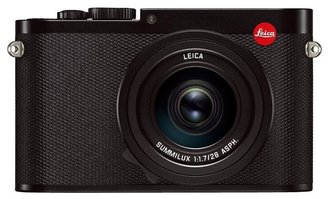 9.7 / 10
Rating
Reviews
What can you say about a Summilux fullframe with optics? Yes, he is just beautiful! |
|
139 990
Not always "in nature" you need a camera that can dive deep - a decent enough dust and moisture protection, frost resistance and a solid body. Well, for such conditions, the X-Pro2 fits perfectly - this is a really good professional "mirrorless" that can work in very tough conditions. We especially note the frost resistance, which will never be superfluous in winter.
The APS-C matrix has a resolution of 24 megapixels and a solid operating range of sensitivity: the minimum shutter speed provided by the mechanical shutter is 1/8000 seconds, and it really can be used. With the latest update of software that can be downloaded from the corporate site, there is support for video in 4K format. As for the noise, they are comparable with what is more usual for full-size matrices, and certainly not for the “crooked”. It remains only to regret that in the price list there are six figures, and not five ... Main advantages:
Minuses:
|
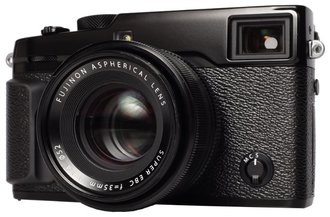 9.6 / 10
Rating
Reviews
I like to take this camera to the mountains - you even feel an extra 100 grams of weight there, and the quality of the photo here is not worse than on my mirror. |
How to choose a digital camera?
If the quality of optics and shutter was the main thing for a film camera, and the choice of film, methods of development and printing could significantly vary the quality of frames, then the first digital camera is a matrix: it, alas, cannot be changed.
Let us remember a little physics: when working at maximum resolution, each physical pixel corresponds to one pixel of the image. The larger the actual dimensions of this pixel, the better it will have the signal-to-noise ratio, the neighboring pixels of the matrix and even its cable will affect the image quality (some interference, especially in a plastic case, it will always collect).
So, the larger the matrix, and the fewer pixels on it, the better. But here the need to have enough of them comes into force, especially if you plan to print images in large format or publish photos in high resolution. As for the size of the matrix, the “point of reference” is a fullframe, in other words, the matrix of the dimensions of an ordinary frame of a small-format film, 24 * 36 mm. All smaller matrices are described by a crop factor, a size-to-fullframe ratio — that is, if the FF matrix has a crop factor of 1, then a matrix with a crop factor of 1.5 will be exactly one and a half times smaller. With the development of modern technology, APS-C matrices with a crop of 1.5–1.6, Four Thirds (commonly used by Olympus) and even inch matrices with a size of 2.7 provide more than decent quality. Smaller sizes will already require attention, especially so often used in low-priced compact 1 / 2.3 "(crop 6).
Some analogue of a film in a digital photo is the RAW format - in fact, the raw data from the matrix are saved to the file, which opens up wide possibilities for editing the source code. Shooting in JPEG is easier, especially for novice photographers, but often the photo is either clamped with an inevitable loss of quality, or “blurred” by software anti-noise, masking the poor quality of the matrix.

